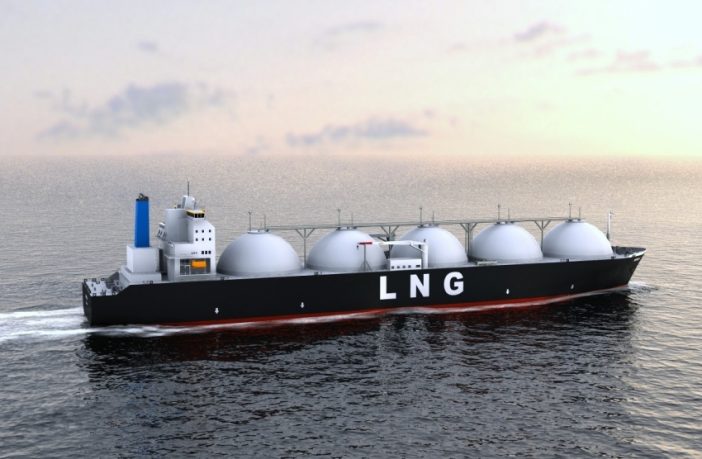Opinion
In the last decade, there has been an increase in natural gas production, consumption and export in Africa as the continent has recognised its vast resources that could be used to increase energy access for its population.
In the same breath, the gas price is attractive and is expected to stay so in the near future, providing an ideal opportunity for the development of dormant gas resources, writes Michael Konadu, Commercial Growth Director, GE Gas Power, sub-Saharan Africa.
Gas also has a crucial role to play in enabling the transition to renewables. The accessibility of natural gas to fuel Africa’s growth will be dependent on the availability of natural gas to complement renewables, developing natural gas infrastructure, creating an enabling environment for investment and collaboration between different stakeholders.
Natural gas as a complement to renewables
Natural gas generation supports the grid with dispatchable, flexible, affordable and fast power to reliably generate large amounts of electricity on demand when the sun, rain and wind speeds vary over the course of the day as well as across seasons.
Gas power technologies not only offer the flexibility to ramp power production and stabilise the grid, but today, gas also presents the cleanest means to generate electricity from traditional fossil fuels. Globally, gas is ~50% less carbon-intensive (~0.45 Mt CO2/TWh) than coal (~0.95 Mt CO2/TWh).
These dynamics have led equipment manufacturers to continually invest in gas turbine enhancements to improve power plant efficiency. As an example, GE’s H-Class gas turbine portfolio currently has the capability to burn up to 50% by volume of hydrogen when blended with natural gas.
Developing natural gas infrastructure
Even though there is great potential for natural gas utilisation in sub-Saharan Africa, natural gas use and export is currently limited.
This limitation is because several new gas pipelines are either uncompleted or proposed across the region including the West African gas pipeline, the East African pipeline construction between Tanzania and Kenya, and the Southern African pipeline project, which transports gas from Mozambique to South Africa.
It is expensive constructing gas pipelines but the cheaper cost of gas at the end of the pipeline makes it a worthwhile investment.
Ultimately, countries need to work out the economics between moving electricity through the grid vs investing in gas pipeline infrastructure especially based on energy demand. GE gas turbines offer a variety of fuel options, including LNG and LPG, which allows for the harnessing of fuels from different sources as gas infrastructure is finalised.
Creating enabling environment for investment
Pricing of electricity tariffs is an important element in increasing use of electricity and ultimately leading to more investments in the power sector.
Affordable electricity means increase in industrialisation, education access, mechanisation, healthcare access and business growth. Electricity stimulates the economy towards GDP growth while expensive electricity undermines economic performance through reducing the uptake and willingness to pay.
Countries in sub-Saharan Africa can take advantage of economies of scale through power pools in order to lower infrastructure needs and operating costs. It is also important to consider the fuel price and consider appropriate risk sharing models.
The gas price is falling globally, so discussions on renegotiating fuel prices are also timely.
Collaborative effort
Bridging the energy gap in sub-Saharan Africa will require continuous, sequential power improvements and the full involvement of all necessary stakeholders, including governments, fuel suppliers, private capital and technology providers.
An essential and skilled workforce, flexible solutions and the ability to collaborate as equipment providers, EPCs, financiers, investors and governments is critical to success.
Independent power projects (IPPs) are an important source of new investments in sub-Saharan Africa’s power sector. The increase in gas IPPs in the region has led to improved and localised knowledge in developing and running gas power plants.
Earlier this year, GE was selected as the technology partner for Azito’s Phase IV extension combined-cycle power plant in Cote D’Ivoire. Once Phase IV extension is complete, the power plant is expected to generate approximately 710MW, representing 30% of power in Côte d’Ivoire. The project is a good example on how IPPs can successfully participate in sub-Saharan Africa’s energy advancement.
Natural gas will continue to be an important part of the global energy portfolio as sub-Saharan Africa navigates the energy transition to tackle climate change and addresses the desire to provide electricity to 600 million people without electricity today. Critical to its success is the combination of new gas discoveries and an enabling environment.
Author: Michael Konadu, Commercial Growth Director, GE Gas Power, sub-Saharan Africa.
This article was originally published on ESI Africa and is republished with permission with minor editorial changes
Disclaimer: The articles expressed in this publication are those of the authors. They do not purport to reflect the opinions or views of Green Building Africa, our staff or our advertisers. The designations employed in this publication and the presentation of material therein do not imply the expression of any opinion whatsoever on the part Green Building Africa concerning the legal status of any country, area or territory or of its authorities.















